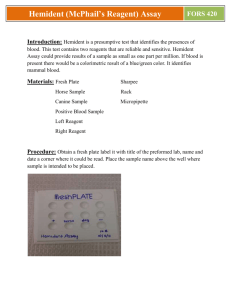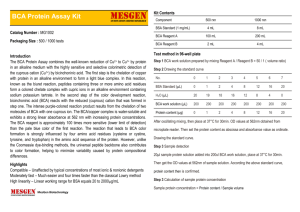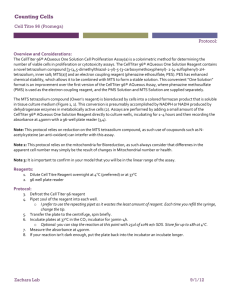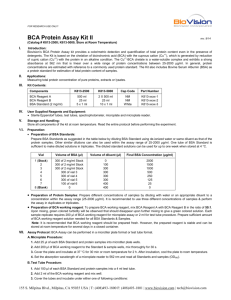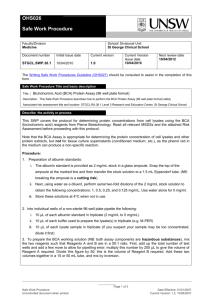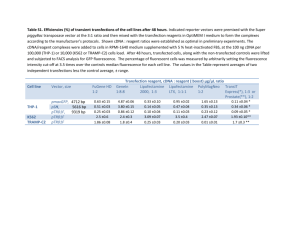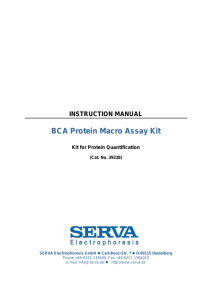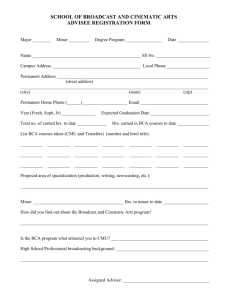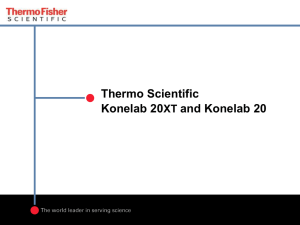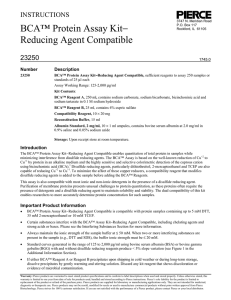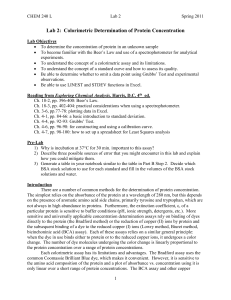BCA Assay
advertisement
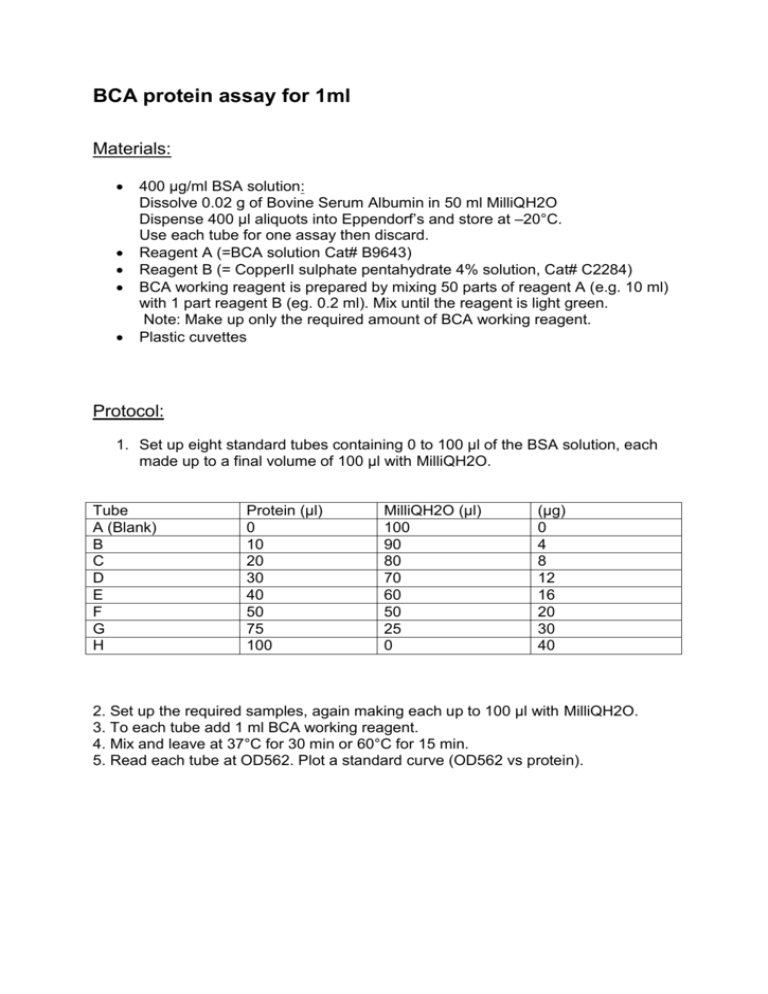
BCA protein assay for 1ml Materials: 400 μg/ml BSA solution: Dissolve 0.02 g of Bovine Serum Albumin in 50 ml MilliQH2O Dispense 400 μl aliquots into Eppendorf’s and store at –20°C. Use each tube for one assay then discard. Reagent A (=BCA solution Cat# B9643) Reagent B (= CopperII sulphate pentahydrate 4% solution, Cat# C2284) BCA working reagent is prepared by mixing 50 parts of reagent A (e.g. 10 ml) with 1 part reagent B (eg. 0.2 ml). Mix until the reagent is light green. Note: Make up only the required amount of BCA working reagent. Plastic cuvettes Protocol: 1. Set up eight standard tubes containing 0 to 100 μl of the BSA solution, each made up to a final volume of 100 μl with MilliQH2O. Tube A (Blank) B C D E F G H Protein (μl) 0 10 20 30 40 50 75 100 MilliQH2O (μl) 100 90 80 70 60 50 25 0 (μg) 0 4 8 12 16 20 30 40 2. Set up the required samples, again making each up to 100 μl with MilliQH2O. 3. To each tube add 1 ml BCA working reagent. 4. Mix and leave at 37°C for 30 min or 60°C for 15 min. 5. Read each tube at OD562. Plot a standard curve (OD562 vs protein). BCA protein assay for plate reader Materials: 1mg/ml BSA solution: Dissolve 0.05 g of Bovine Serum Albumin in 50 ml MilliQH2O Dispense 200 μl aliquots into Eppendorf tubes and store at –20°C. Use each tube for one assay then discard. Reagent A (=BCA solution Cat# B9643) Reagent B (= Copper II sulphate pentahydrate 4% solution, Cat# C2284) BCA working reagent is prepared by mixing 50 parts of reagent A with 1 part reagent B. Mix until the reagent is light green. Note: Make up only the required amount of BCA working reagent. 96 well plate Method: 1. Set up six standards in triplicates containing 0 to 10 μl of the BSA solution, each made up to a final volume of 10 μl with MilliQH2O. Tube A (Blank) B C D E F Protein (μl) 0 2 4 6 8 10 MilliQH2O (μl) 10 8 6 4 2 0 μg/10μl 0 2 4 6 8 10 2. Set up the required samples in triplicates, again making each up to 10 μl with MilliQH2O. 3. To each well add 200μl BCA working reagent. 4. Mix and leave at 37°C for 30 min or 60°C for 15 min. 5. Read the plate at OD551 on the plate reader. 6. Plot a standard curve (OD551 vs protein).

